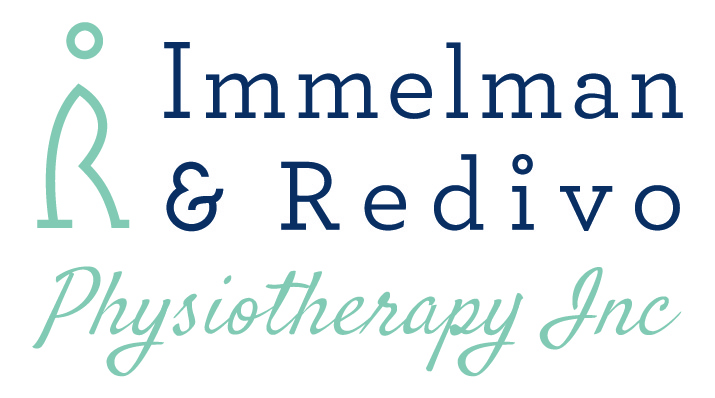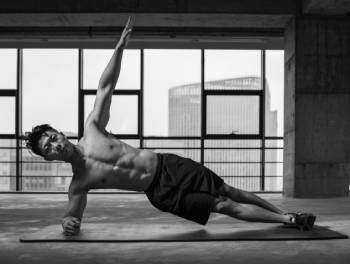Musculoskeletal
The musculoskeletal system includes the bones, joints, muscles, nerves and tendons as well as the way in which they all interact and work together. Each component of the system sustains an injury and cause pain. This could be due to direct trauma, or altered biomechanics. Understanding which structure causes pain is crucial to its treatment.
Kinesiology / Biomechanics
Biomechanics is the study of a living body and the mechanics thereof. This includes the forces exerted by both gravity and muscles on the skeleton. For example we can look at the specific biomechanics of the hip joint. Kinesiology, though, is the study of body movement, especially in humans, and how it relates to the anatomy. Biomechanics is one aspect of kinesiology. Other aspects include: motor control, physiology and dynamic principles. As a physiotherapist we look at the whole individual, assessing all aspects of the body, forces that work in on it and rehabilitation thereof.
Ligament tear or strain
Ligaments, are the connective tissue where two bones form a joint. Ligaments give passive stability to the joint. Injuries can be classified as grade 1 to 3 tears according to the severity of the injury to the tissue. Grade 1 tear is characterised by minimal swelling. Grade 2 tear has more swelling, bruising and at times can make weight bearing difficult. A complete tear or grade 3 tear is when all fibers are torn and severe swelling and bruising are visible. The initial treatment includes prevention of further injury and managing pain and inflammation. One of our main long term aims as physiotherapists is to prevent this type of injury to reoccur; this can be done through phases of rehabilitation, including proprioception training.
Muscle tear or strain
Muscles are connected to the bone by tendon. Muscles can have tears or strains in the belly or tendon areas. These can be classified according to the severity of the injury as a grade 1 to 3. As with other acute injuries, initial treatment is to prevent further injury as well as to manage pain and inflammation. Once this has settled, strengthening and return to function is the priority. We aim to assist the patient return to the same level they had before the injury. It is also vital to identify the cause of the injury and prevent re-injury. Evidence suggests that the best way of preventing muscle strain or tears remain strengthening and lengthening. It is therefore important to not just do sport specific exercise but also specific stretches and strengthening.
Hamstring tear
The large muscle group at the back of the thigh is called the hamstring. The hamstring muscle is used on a daily basis for bending, stabilising and controlling movement around the hip and knee joints. A tear may occur in the muscle due to too much force or overuse. Tears can be acute or chronic, and this will affect the treatment approach. Physiotherapists are well trained in treating acute, chronic or recurrent hamstring injuries.
ITB Syndrome
ITB syndrome is short for Ilio Tibial Band syndrome. The ITB is a thick fascial structure that runs on the outside of the thigh. Pain is experienced on the front and/or outside of the knee and can at times radiate up the leg. This could be as a result of a “too much, too soon’’ training regime, incorrect exercise gear or muscle imbalances. Other possible diagnoses should be cleared especially when looking at the knee or hip. The treatment includes amendment of the training regime and addressing the soft tissue dysfunction. The focus is aimed to correct the imbalance through stretching, strengthening and stability training.
Tennis elbow / Golfer’s elbow
Lateral epicondylitis is the medical term for what is commonly known as tennis elbow, or pain on the outside of the elbow. Medial epicondylitis, also known as Golfer’s elbow, occurs on the inside of the elbow. This is an overuse injury, usually as a result of poor technique, grip size or incorrect training. Tennis/Golfer’s elbow can also develop in the non-athletic individual as a result of repetitive strain for example, after long hours of typing. The tendon that attaches the muscle in the forearm to the bone at the elbow, gets inflamed and this results in pain. There are many beneficial physiotherapy techniques and treatment options that may help. The recovery process can be long, and will require some exercises to be done on a regular basis. Physiotherapists assist with managing the pain, inflammation and guiding the exercise regime until full rehabilitation. Post operative rehabilitation will also be beneficial in cases where surgery was needed.
Shoulder pain:
The shoulder is a complex joint as it requires multiple joints working together to give you full function of your arm. Shoulder injuries can be acute or as a result of overuse. The shoulder joint is one of the most mobile joints in the body and it could be greatly affected by soft tissue dysfunction. Overhead athletes often develop instabilities and swimmers can complain of shoulder pain due to muscle shortening. One sided sports athletes like baseball, golf or tennis can struggle with muscle imbalances.
As there are several structures that could be affected, the severity of this condition needs to be assessed. Your physiotherapist can evaluate and treat all shoulder related injuries.
Rotator Cuff
The rotator cuff is a term used to describe the four muscles with its tendons that allows for stability and movement of the shoulder complex (joint). Supraspinatus, Infraspinatus, Teres Minor and Subscapualris muscles make up the rotator cuff. These muscles are responsible for the functioning of the shoulder girdle by controlling the position of the head of the humerus in the glenoid fossa. Overuse and over head activities are the most common causes of injury for the rotator cuff and can result in impingement syndrome and poor biomechanics. The rotator cuff can also be affected by aging resulting in degeneration, impingement or different grades of muscle tears. Trauma and falls can also cause injury to the rotator cuff. Physiotherapy can effectively diagnose and treat your rotator cuff injury and assist you with the correct exercises and return to normal functioning and sport.
Soft Tissue Dysfunction
The whole body is made up of connective tissue. We are able to stand up straight or move due to connective tissue that works with muscle, ligaments, joints and nerves. There are approximately 640 skeletal muscles in the human body and we have kilometres of nerve and connective tissue. Adaption or imbalances in this connective tissue due to posture, injuries or compensation can be called a dysfunction. Soft tissue myofascial release, dry needling, muscle energy techniques and muscle retraining are used as treatment for soft tissue dysfunction.
Back and Neck Pain
Pain in the back and neck are common complaints during one’s lifetime. In their lifetime, 80% of adults will experience back pain. Your physiotherapist is trained to identify and treat the cause of your condition. With an assessment, we aim to determine the origin of the pain, be it joint, muscle, nerve, neuromuscular control or a combination of the above. We also refer you on to a specialist, if we see in the assessment that it is necessary. Back and neck conditions can also cause referred pain to your legs, arms and head and this also can be determined through a physiotherapy assessment. Headaches and sciatica are two such examples.
Back and neck pain can further be classified into postural syndromes. Specific treatment and education regarding the cause of the pain is done. Treatment may include soft tissue release, stretches, neuromuscular stimulation and rehabilitative exercises. We use a bio-psycho-social approach which includes education, maintenance therapy, exercises, lifestyle management and pacing. You can make an appointment directly at your physiotherapist.
Chronic pain syndromes, including chronic back and neck pain is a complex problem and needs a multi-faceted approach.
Feel free to read more about this at the chronic pain syndromes tab further down.
Slipped disc
Often if you experience back or neck pain, it could be described to you as a slipped disc. Latest research has now shown us that a disc cannot really “slip”. In fact, a better explanation might be that the disc or structures in the back could become irritated and this may cause inflammation. Inflammation may cause pressure on the nerve and this can be very painful. Discs could originally be the problem, but as the pain becomes more chronic, there could be different contributing reasons for the pain. During your first physiotherapy consultation a full assessment will be done to identify which structures are causing the irritation that result pain. Further treatment may include decreasing the inflammation, active exercises, stability work and pain control.
Whiplash
Whiplash injuries are not limited to motor vehicle accidents, but can include falls, bumps, and tackles. Whiplash can be graded from mild to severe and x-rays are at times needed. In an acute whiplash injury, the priority is to educate the patient on management plans, decrease pain, and gain a wider range of motion. This can be done with soft tissue treatment, ice packs, electro therapy, strapping, advice specific to the patient and history of the injury/trauma. As the whiplash injury improves, the focus shifts to gaining a full range of motion and strengthening the muscles supporting the neck and shoulders. Re-educating the neck on proprioception (the joints ability to support itself in space) is key to manage and prevent recurrence of pain and dysfunction. One would like to exclude any concussions associated with whiplash, as the management of concussions and whiplash is patient specific and needs to be guided.
Headaches
Headaches are a common and at times a debilitating condition. There are different types of headaches. Physiotherapists work mainly with tension type headaches, migraines and cervicogenic headaches.
Cervicogenic headaches are the result of pain that originates from the cervical spine or upper part of the neck. This can be due to a dysfunction (misuse) at the first 4 vertebrae.
Tension type headaches are mainly linked to high stress levels and the muscles in the neck and shoulders. Migraines are at times associated with tension or cervicogenic headaches and physiotherapy can help to manage flare-ups.
An assessment can help with clear identification of your headaches. Poor posture and previous injury, such as a whiplash, can contribute to headaches. Treatment may include postural correction, stretches, strengthening and heat packs for muscle tension. If you suffer often from headaches your physiotherapist can assist you with a maintenance program that can prevent the onset or manage the symptoms of a headache once it arises to allow you to function better.
Postural Correction
Prevention is better than cure! This well known saying is part of our approach to postural conditions. Posture can be negatively affected by work, school or while participating in sport. Correcting posture, once there is a dysfunction/pain, is a priority, but postural assessment and education should be done with all individuals. Treating scoliosis is also part of postural correction.

